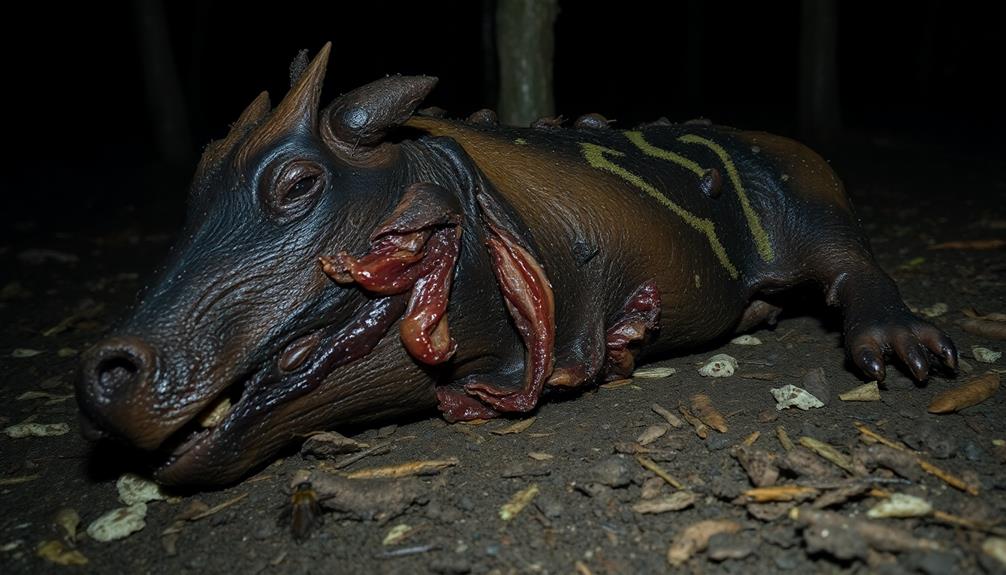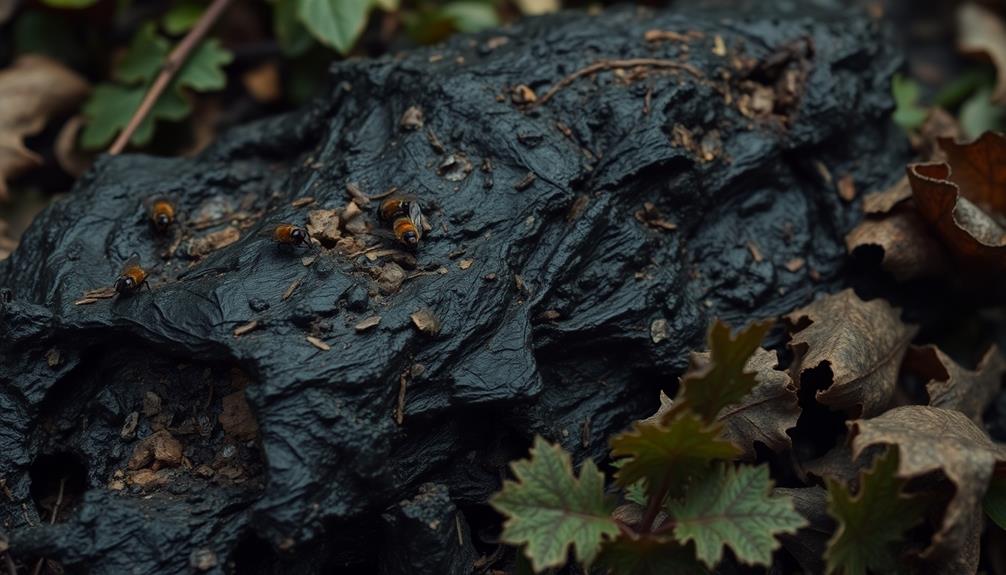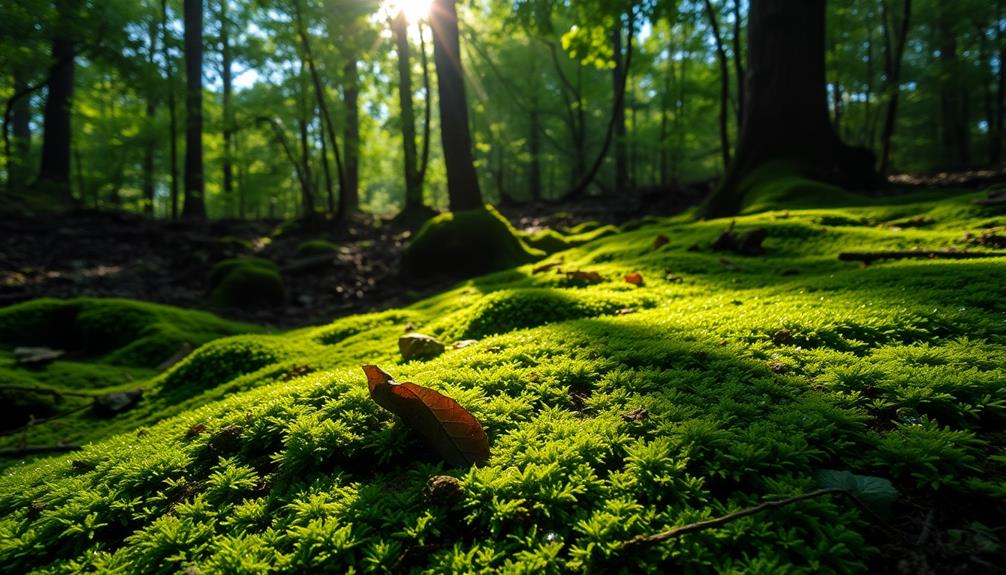When you come across the smell of rotting flesh, it's a powerful and unpleasant scent. It's caused by decay and bacteria breaking down the body, creating a mix of odors. You might notice sweet, foul, and even fishy notes. Plus, some smells remind you of rotten eggs, while others can be musty like old clothes! This scent can be found in warm, damp places where bodies might decompose, like farms or garages. Even though it's quite disgusting, it reminds us of life's cycle. Stick around to discover more fascinating facts about nature's wonders!
Key Takeaways
- The smell of rotting flesh is characterized by sweet, foul, and putrid odors, evolving over time from earthy to acrid.
- Key compounds like cadaverine and putrescine evoke scents similar to decaying fish, while hydrogen sulfide adds a rotten egg aroma.
- Additional odors include skatole, which introduces a strong fecal scent, and indole, contributing a musty, mothball-like smell.
- Environmental factors such as temperature and humidity significantly influence the intensity of the decomposition odor.
- The scent often triggers feelings of disgust and fear, and is culturally associated with mourning and reflections on loss.
Introduction

The smell of rotting flesh hits you like a wall, a pungent reminder of nature's cycle of decay. When a body begins to decompose, it produces a variety of strong odors that can be quite unsettling. You might notice hints of rotting fish or even the scent of something earthy and musty. This is because of gases released by bacteria breaking down the tissue.
Cadaverine and putrescine are two key compounds responsible for that unpleasant smell. They can make the air feel heavy and thick, almost like a fog of odor. Hydrogen sulfide, which smells like rotten eggs, can join the mix, making the experience even more intense.
As decomposition continues, the smell changes. At first, it might be somewhat sweet and earthy, but as time passes, it becomes acrid and overpowering. This evolution is all part of the natural process that happens to all living things.
Understanding these smells can help you appreciate the cycle of life and death, reminding us of our connection to nature. So, even if it's not pleasant, it's a fascinating part of life!
Description of the Smell

Decaying flesh exudes a potent aroma that's both unsettling and fascinating. Imagine walking into a room filled with the smell of death. You might notice a mix of sweet, foul, and putrid odors swirling around you. This happens because of gases released during the decomposition process. One of these gases is hydrogen sulfide, which smells like rotten eggs. Yuck!
As you take a breath, you'll encounter other smells too. Cadaverine and putrescine, created as the body breaks down, remind you of decaying fish. And let's not forget skatole, which adds a strong, fecal scent to the mix. It's like a stinky surprise!
Then, there's indole, produced by bacteria, giving off a musty, mothball-like scent. These odors combine to create a truly unique experience that's hard to forget.
Environmental factors play a big role in how strong these smells can be. On warm, humid days, the smell of rotting flesh can become even more intense, making it really hard to ignore.
Source and Composition

At the heart of the smell of rotting flesh lies the breakdown of proteins by bacteria. When a body decomposes, it releases a mix of chemical compounds that create this distinct odor. You might notice gases like hydrogen sulfide, which smells like rotten eggs, joining the party.
Cadaverine and putrescine, both contributing strong rotting fish scents, also play a big role in human decomposition.
But that's not all! Skatole, a compound linked to feces, brings a powerful fecal odor that adds to the smell of rotting. You can think of it as nature's way of reminding us of life's cycles.
Then there's indole, which has a musty, mothball-like scent, further enriching the overall odor profile.
Interestingly, environmental factors like temperature and humidity can change how intense or mild these smells are. For example, higher temperatures can cause certain oils in plants to evaporate more quickly, leading to a stronger scent, while lower temperatures may suppress the release of these aromatic compounds. Humidity levels can also affect how well a smell lingers in the air. In the case of white sage’s distinctive aroma, the dryness of the environment can amplify its sharp, earthy notes, making it even more noticeable during ceremonial use or simply when burned for cleansing purposes.
Typical Scenarios or Environments

Decomposing bodies release their unmistakable odor in various scenarios, from rural backroads to urban alleys. When a dead body starts to break down, it emits extremely unpleasant smells that can be hard to ignore.
Picture walking past a farm or an empty lot; you might catch a whiff of something that reminds you of rotten eggs or decaying meat. This is due to gases like hydrogen sulfide and putrescine that come from the decomposing body.
In warmer places, the smell can become even stronger. The heat speeds up decomposition, allowing the odor to spread quickly. If you're in an enclosed space, like a garage or basement, the smell can be especially overwhelming, making it feel like the air is thick with decay.
In both urban and rural settings, the scent of a decomposing body can attract scavengers and insects, who are drawn to the odor. This is nature's way of handling decay.
Understanding these typical environments helps you appreciate the complex process of decomposition, even if the smell itself isn't enjoyable!
Emotional or Cultural Associations

The smell of rotting flesh triggers powerful emotional reactions, often stirring feelings of disgust and fear. This Dead Body Smell reminds us of death and decay, which can be pretty unsettling.
In many cultures, though, the scent of decomposition has a deeper meaning. It's often tied to rituals of mourning, making us reflect on life and loss. When you catch a whiff of this smell, it might spark memories of someone you've lost, bringing back feelings of sadness or grief.
Art often uses the imagery and scent of rotting flesh to show how fragile life is. You might see this in books or movies, where it symbolizes the cycle of life and the inevitability of death. It prompts you to think about your own existence and the connections you have with others.
Even though the smell is repugnant, it can also lead to beautiful reflections about life. You may find yourself considering how important it's to cherish every moment.
Health or Safety Considerations

Exposure to the odor of rotting flesh can pose significant health risks, especially for sensitive individuals. When a body is dead and begins to decompose, it releases gases like hydrogen sulfide and putrescine. These gases can be dangerous in high concentrations, leading to coughing, wheezing, or throat irritation.
If you're near decomposing materials, it's important to use personal protective equipment (PPE). This includes gloves, masks, and respirators. Wearing PPE helps protect you from harmful pathogens and toxic gases.
The lingering smell of decomposed bodies may also mean there are hazardous microorganisms nearby. This is why thorough decontamination is essential to ensure your safety.
You might notice symptoms like allergic reactions or skin irritations if you're exposed. It's vital to follow proper safety protocols during cleanup or investigation, so you stay safe and healthy.
Final Thoughts

Understanding the health risks associated with the smell of rotting flesh highlights the importance of awareness in such situations. When you encounter the odor of rotting meat, it can be quite alarming.
This smell is often a mix of pungent scents like cadaverine and putrescine, and it can even remind you of decaying fish! As decomposition happens, gases like hydrogen sulfide join the party, giving off that rotten egg smell.
You might also notice dimethyl disulfide and other compounds creating earthy and fecal notes. Isn't it fascinating how organic matter breaks down and changes over time?
Environmental factors, such as heat and humidity, can make these smells even stronger, especially in warmer places. This can evoke strong feelings due to its connection with death and decay.
Frequently Asked Questions
What Does Flesh Decomposing Smell Like?
When flesh decomposes, you'll notice an evolving odor. Initially, it might seem earthy and sweet, but as decay progresses, it turns acrid and foul, filled with pungent compounds that can be quite overwhelming.
What Does Rotten Skin Smell Like?
When you encounter rotten skin, you'll notice a pungent, nauseating odor. It combines elements reminiscent of spoiled fish and feces, intensifying as decomposition progresses, creating a distinctly foul and repulsive scent that's hard to forget.
What Does Infected Flesh Smell Like?
When you encounter infected flesh, you'll notice a strong, unpleasant odor. It's often a mix of putrid, decaying scents with hints of sulfur and feces, intensifying as the infection worsens and tissue breaks down.
What Smells Like Rotten Flesh?
You might notice that various decaying organic materials, like spoiled meat or overripe fish, can emit odors similar to rotten flesh. These smells often stem from the same types of bacteria and gases involved in decomposition.









